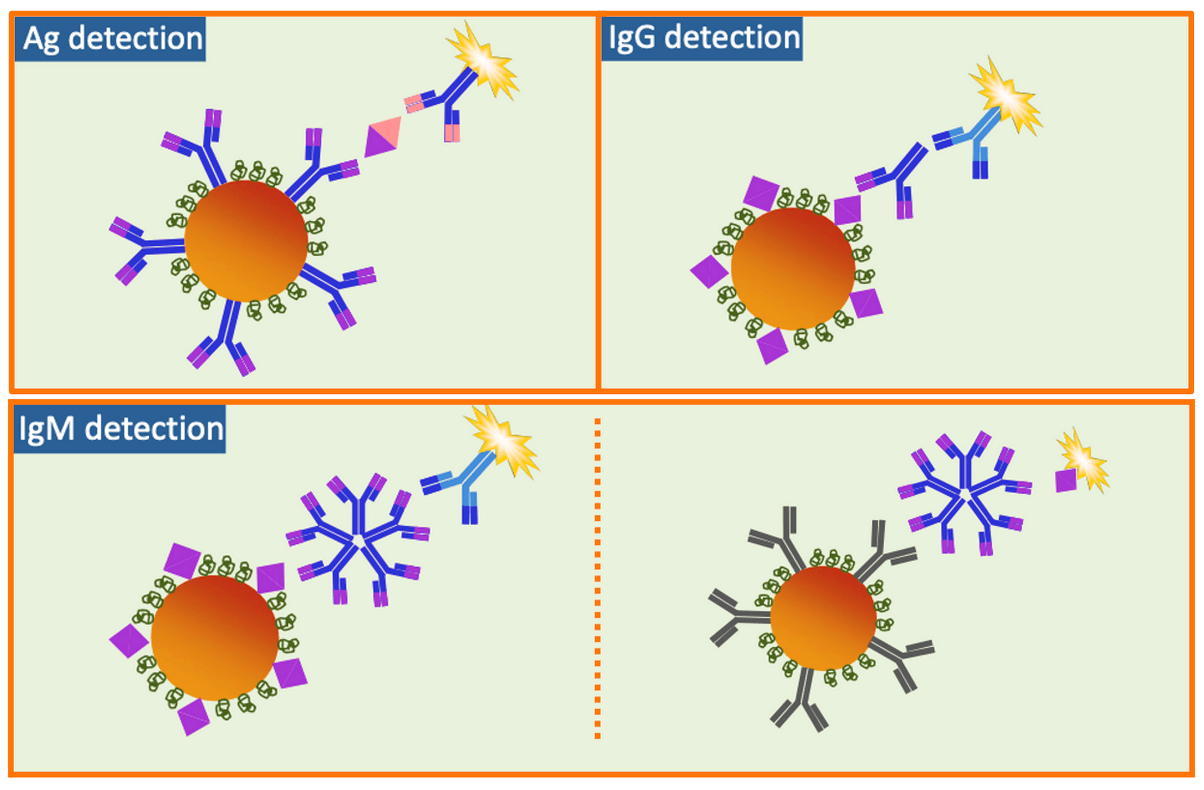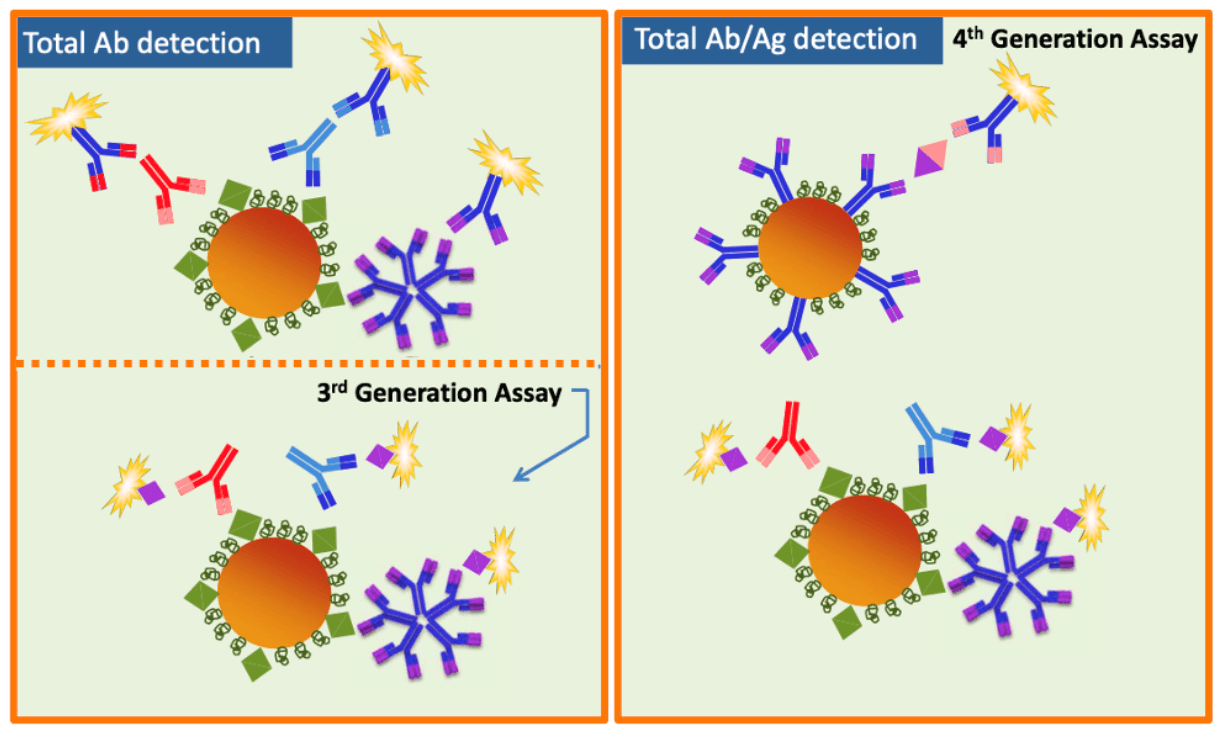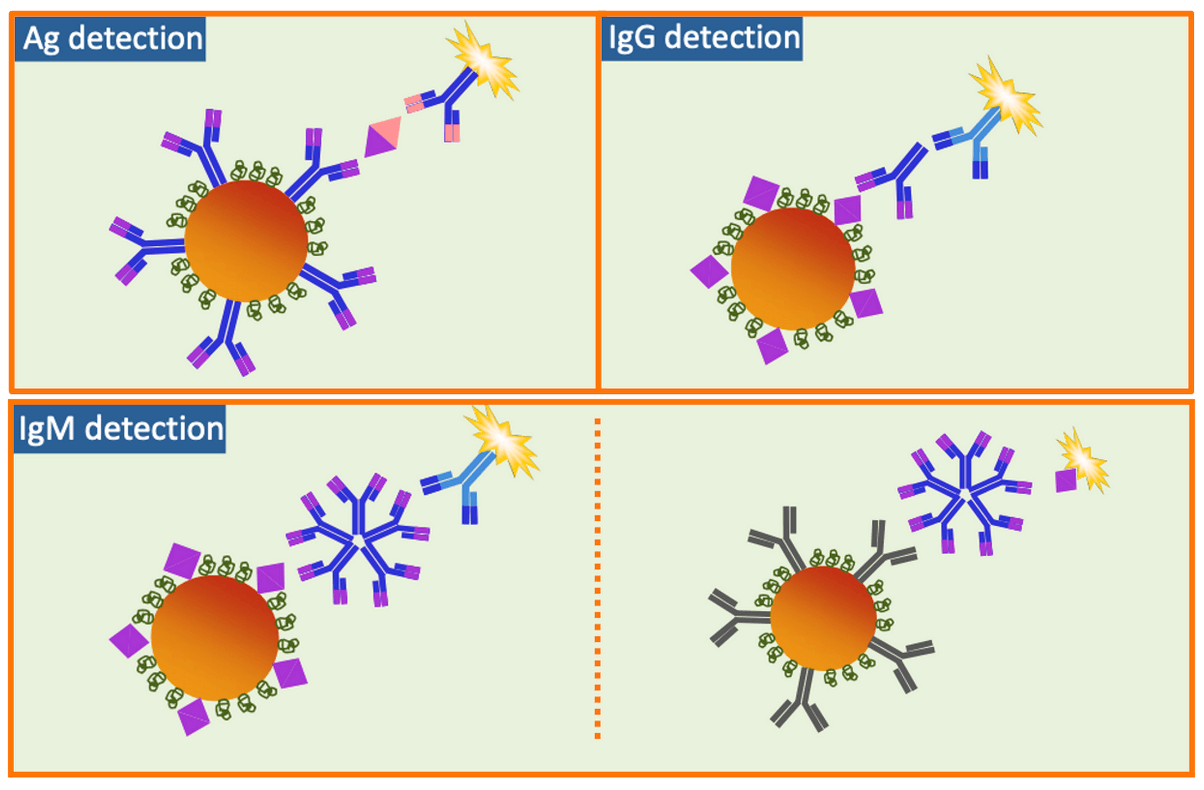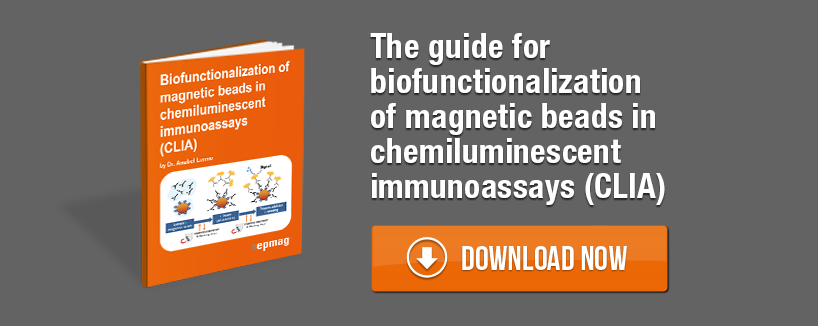There are several types of CLIA formats that can be used depending on the target analyte of your assay. The choice of assay format will impact four major aspects of development. The first will be the choice of magnetic bead coated with antigen/s or antibody/ies for binding the target analyte. The tracer will then be required to match the target analyte using a conjugated antibody/ies or antigen/s conjugatedith a CLIA label. The assay buffer will need to be optimized to improve the specificity and sensitivity for each step. Lastly there will be components such as blockers, other linking molecules or stabilizing molecules. These aspects can be optimized once an assay format is chosen.

The following examples represent typical assay formats depending on the target to be detected.
Assay formats type 1, simple CLIA assay formats

Antigen (Ag) detection-
A sandwich assay can be used for Ag detection. In this case, magnetic beadsare conjugated with antibodies specific to the target antigen. Then, a sample that contains the specific antigen is then binded to the antibody. Lastly, the tracer is a CLIA-labeled antibody that can also bind to the antigen that needs to be detected.
IgG detection-
For this type of assay format magnetic beads can be conjugated with an antigen specific to the IgG. Then, a sample that contains the specific IgG is then bound to the antigen. Lastly, the tracer is a CLIA-labeled anti-IgG antibody that binds to the IgG antibody that needs to be detected.
IgM detection-
Similarly to IgG format, IgM can be detected using magnetic beads conjugated with an antigen specific to the IgM. Then a CLIA-labeled IgM is used as a tracer. Alternatively, there is another format for the detection of IgM, where magnetic beads are conjugated with an anti-IgM and then the tracer in this case is an antigen specific to the target IgM. This alternative format implies the CLIA labelling of an antigen instead of an antibody and this can be more challenging for keeping the specificity of the antigen labelled.
Assay formats type 2, complex CLIA assay formats

Total antibody (Ab) detection-
More complex assay is required to detect multiple types of immunoglobulins. To detect IgG, IgA and IgM; magnetic beads can be conjugated with several types of antigens specific to various immunoglobulins. Then, the tracer consists of anti-IgG, anti-IgA and anti-IgM CLIA-labelled antibodies that bind to the antibodies.
The total antibody detection can be performed with a more sophisticated assay called “third generation assay”, in this case antigens for multiple types of antibody are conjugated to the surface of the magnetic beads. IgG, IgA, and IgM are bound specifically to the bead by the antigen. The tracer molecule in this case is a CLIA-labeled antigen. This assay format is more specific as the tracer molecules correspond directly to the antibody-antigen interaction of interest, rather than using a secondary antibody.
Total antibody (Ab) and antigen (Ag) detection-
Sometimes, detecting in a sample both antibodies and antigens can be highly beneficial, as for example the case of HIV. For this assay format called “fourth generation assay”, a combination of magnetic beads conjugated to either antigen/s or antibody/ies are used. The beads conjugated with several antigens are specific for IgG, IgA and IgMantibodies and the tracer is a CLIA-labeled antigen. While the antibody conjugated beads will bind the antigen of interest and then a secondary CLIA-labeled antibody will act as a tracer.
Related news
- Moving from Latex Particles to Magnetic Latex Particles
- Aspects of available Chemiluminescent immunoassay (CLIA) kits in the market
- Streptavidin HRP




